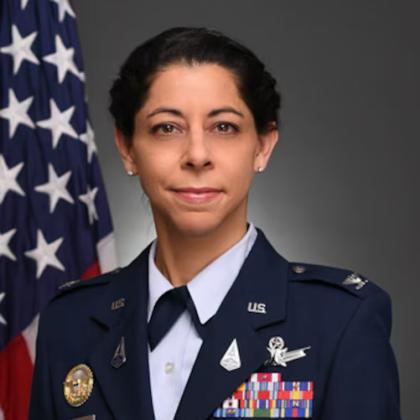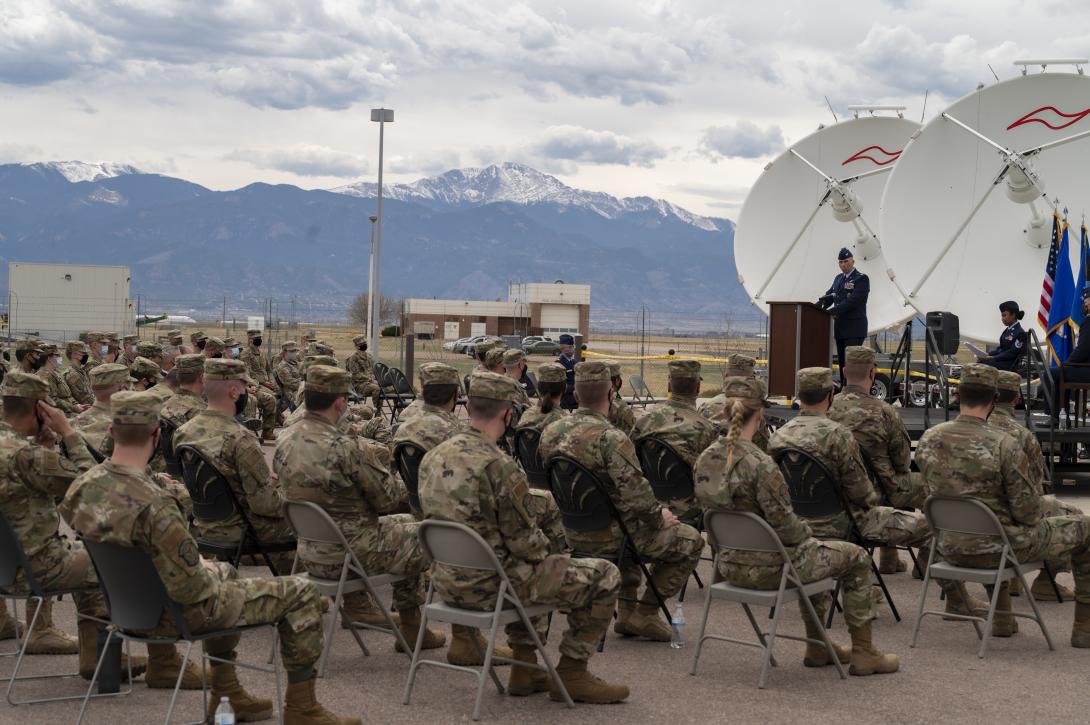Electronic Warfare Delta Sees Strength as an ‘IMD’
Seven months into its existence, a prototyping organizational concept for the U.S. Space Force’s Delta units is proving effective, reported Col. Nicole Petrucci, commander, Space Delta 3–Electronic Warfare Delta.
In September, U.S. Space Force Chief of Space Operations Gen. B. Chance Saltzman announced the pursuit of the Integrated Mission Delta (IMD) concept at an Air and Space Forces’ annual conference. Space Force leaders selected Delta 3 and the position, navigation and timing (PNT) delta as the first two to become IMDs.
Delta 3 is responsible for electromagnetic warfare (EW) related to the space domain and includes the 4th, 5th and 16th Electromagnetic Warfare Squadrons and the 3rd Combat Training Squadron. Col. Petrucci, who took command in June 2023, leads 600 Guardians and the airmen, civilians and contractors who prepare and present EW warfighting capabilities.
For now, the Delta has EW assets it is responsible for sustaining. In the future, it will acquire additional space-based EW capabilities. One of Delta 3’s EW sustained assets is the so-called Counter Communications System (CCS) Block 10.2, a transportable space electronic warfare system that reversibly denies adversary satellite communications, according to the service. The quick reaction system achieved initial operating capability in March 2020, evolving from the first CCS introduced in 2004 and developed with L3 Harris.
Organized by mission area, the IMD prototype organizational structure combines operations and maintenance, acquisition, cyber and intelligence functions into the deltas. The shift to integrate resources into mission areas places Guardians, technology, training and sustainment into one delta—instead of separating operations, acquisitions or cyber.
The Space Force, which is pursuing IMDs to provide greater readiness in the space domain amid growing competition from adversaries such as the People’s Republic of China, hopes to replicate the IMD concept in more of the deltas.
Notably, Delta 3 is led by an operator and the second-in-command is an acquisitions leader. With the PNT delta, that structure is flipped, with an acquisitions leader and the second-in-command an operator. Within Delta 3, especially, the Guardians have strengthened both the communications and the feedback loops between the operators and the acquirers regarding sustainment efforts of the electronic warfare assets.
But this has not come without a learning curve, Col. Petrucci explained.
“What we have learned from our early progress and our experiences as an IMD is that we're still learning, we're still learning a lot,” she stated in an interview with SIGNAL Media. “Because the acquisition responsibility is new to the Delta—and we did have a few acquisition professionals that sat on the Delta staff—but what they did was very different than what we're being asked to do, with what we are being asked to run for sustainment. And so as we went along, we're like, ‘oh, we don't have somebody that has this expertise or that expertise.’ We have really have learned a lot in this role, because there's no real clear line between sustainment and development.”

It allows us to cycle [through with] whatever is needed, making those minor advantages we may have into major advantages.
Moreover, the IMD concept is increasing the Delta’s picture of sustainment and ultimately its operational success. “IMD really enables the mission,” the colonel continued. “And for us, we really do feel now that we own sustainment of 10.2.”
The EW system needed some tweaks recently. And with the IMD construct, the Delta was able to work closely with the acquisition and contractor partners, consulting back and forth about what was needed. The acquisition personnel also were able to work closely with the Delta’s deployed units.
“We have many deployed units around the world, and so, when they have a problem, we need to get it fixed right away,” the commander stated. “And we are able to do that quicker, because now we own that sustainment. We are able to direct the prioritization of what gets fixed and when.”
And it is not that the Delta didn’t already have a great partnership with the service’s acquisition arm, Space Systems Command (SSC), Col. Petrucci said. “It just makes it more personal,” she said. “It allows us to cycle [through with] whatever is needed, making those minor advantages we may have into major advantages. We can do that quicker so that we can get that that military advantage and then help those warfighters around the world with what we're doing.”
The commander’s initial reflection is that how the Space Force performs its acquisition is evolving.
“When Integrated Mission Deltas were announced, there was uncertainty with what was going to happen with SSC,” she clarified. “And now they have stood up those system deltas (SYDs) and so, they kind of do the more development side of the program and we do the sustainment.”
As a result, Delta 3 has had greater collaboration in shaping where the CCS Block 10.2 will go and what the prioritization is.
“We definitely have seen success,” she shared.
The Delta also is working on how it will add other EW space systems. The next planned addition to the IMD is the so-called Bounty Hunter system. According to a report from Tech. Sgt. Frank Casciotta of the 310th Space Wing Public Affairs at Schriever Space Force Base, Colorado, the $4.7 million Bounty Hunter 2.0 training system was unveiled in May 2021. The procurement was provided by the Air Force Life Cycle Management Center’s Bounty Hunter Program Management office and the Air Force Reserve Command Headquarters, with funds through the National Guard and Reserve Equipment Account.
Casciotta noted that the platform provides training in electromagnetic spectrum awareness, satellite communications signal monitoring, signal characterization, electromagnetic interference detection and geolocation.
“Our Bounty Hunter system is currently managed by the Air Force Lifecycle Management Center,” Col. Petrucci stated. “We are working with them to figure out how to bring it into the Space Force because it is in the Air Force now, and how do we bring it into the IMD and also in the SYD. We hope we have those same successes of IMD with Bounty Hunter, because now we'll be in charge of sustainment, so we'll be able to prioritize what actions happen.”
In Related News ...

SIGNAL Media's Disruptive by Design podcast host Kimberly Underwood spoke with Col. Nicole Petrucci for a recent episode. To young professionals, the colonel advises to take, and make, opportunities to further careers and to learn to do your job—smartly. That means to question whether how you’re doing your job makes the most sense. Can it be done better? Differently to be more efficient? To more seasoned professionals, she advises that good ideas can come from everywhere, including the most junior of staffers, and that meetings need objectives. Wise. For all, Col. Petrucci likens the work-life balance to a teeter totter. It won’t always been perfectly balanced and the secret is learning to make the most of the ups and downs.
Listen on Spotify Listen on YouTube




Comments